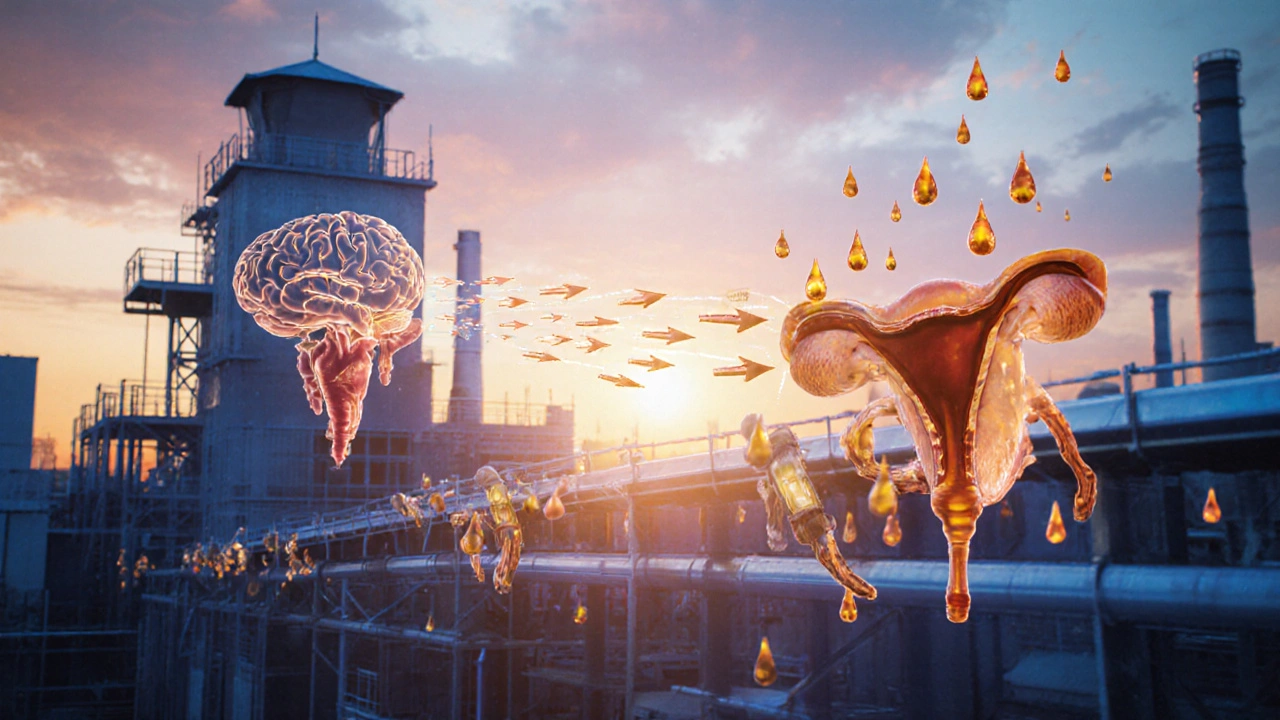Secondary Hypogonadism: What It Is and Why It Matters
When dealing with secondary hypogonadism, a condition where low testosterone is traced to a problem in the brain’s hormone‑sending centers. Also known as hypogonadotropic hypogonadism, it often shows up in men who feel tired, lose muscle, or have a reduced sex drive. The key players behind the scene are the pituitary gland, a pea‑sized organ that releases LH and FSH to tell the testes what to do and the LH/FSH hormones, the messengers that trigger testosterone production. If the pituitary can’t send the right signal, the testes stay quiet even though they’re healthy. Understanding this hormone chain helps explain why issues like obesity, chronic illness, or certain medications can tip the balance and lead to low testosterone levels.
Key Causes, Symptoms, and How Doctors Diagnose It
Understanding secondary hypogonadism starts with spotting the signs. Men may notice a gradual drop in libido, fewer erections, fatigue, mood swings, or a slow recovery after workouts. These symptoms overlap with many other health problems, so doctors rely on blood tests that measure total and free testosterone alongside LH and FSH levels. Low testosterone paired with low or normal LH/FSH points to a secondary issue rather than a testicular problem. Imaging studies, such as MRI of the brain, can reveal pituitary tumors or structural lesions. Lifestyle factors matter too—excess body fat, untreated sleep apnea, and long‑term opioid use can suppress the hypothalamic‑pituitary axis. By linking symptoms to lab results and imaging, clinicians can separate true secondary hypogonadism from other causes of low testosterone.
Once the diagnosis is clear, treatment focuses on restoring the hormonal signal or directly replacing testosterone. testosterone therapy, delivered via gels, patches, injections, or pellets, can quickly raise blood levels and improve energy, muscle mass, and sexual function is often the first line for men who need relief. However, because the root issue lies in the brain, some doctors prefer to address the underlying cause: weight‑loss programs for obesity, treating sleep apnea, adjusting offending medications, or, in rare cases, surgery or radiation for pituitary tumors. Lifestyle tweaks—regular resistance training, adequate vitamin D, and balanced nutrition—support natural hormone production and can reduce the dose of replacement therapy needed. Monitoring is essential; regular labs ensure testosterone stays in the optimal range without pushing levels too high, which could raise cardiovascular or prostate concerns.
Below you’ll find a curated set of articles that dive deeper into each aspect mentioned here. From detailed guides on hormone testing to real‑world tips for safe testosterone replacement, the collection covers the full spectrum of secondary hypogonadism—whether you’re just noticing symptoms or already managing a diagnosis. Explore the resources to get actionable insights, compare treatment options, and learn how related health topics like obesity, pituitary disorders, and medication effects intersect with this condition.
Types of Hypogonadism Explained - Complete Guide
Learn how primary and secondary hypogonadism differ, why lab results matter, and which treatments fit each type in this thorough guide.
